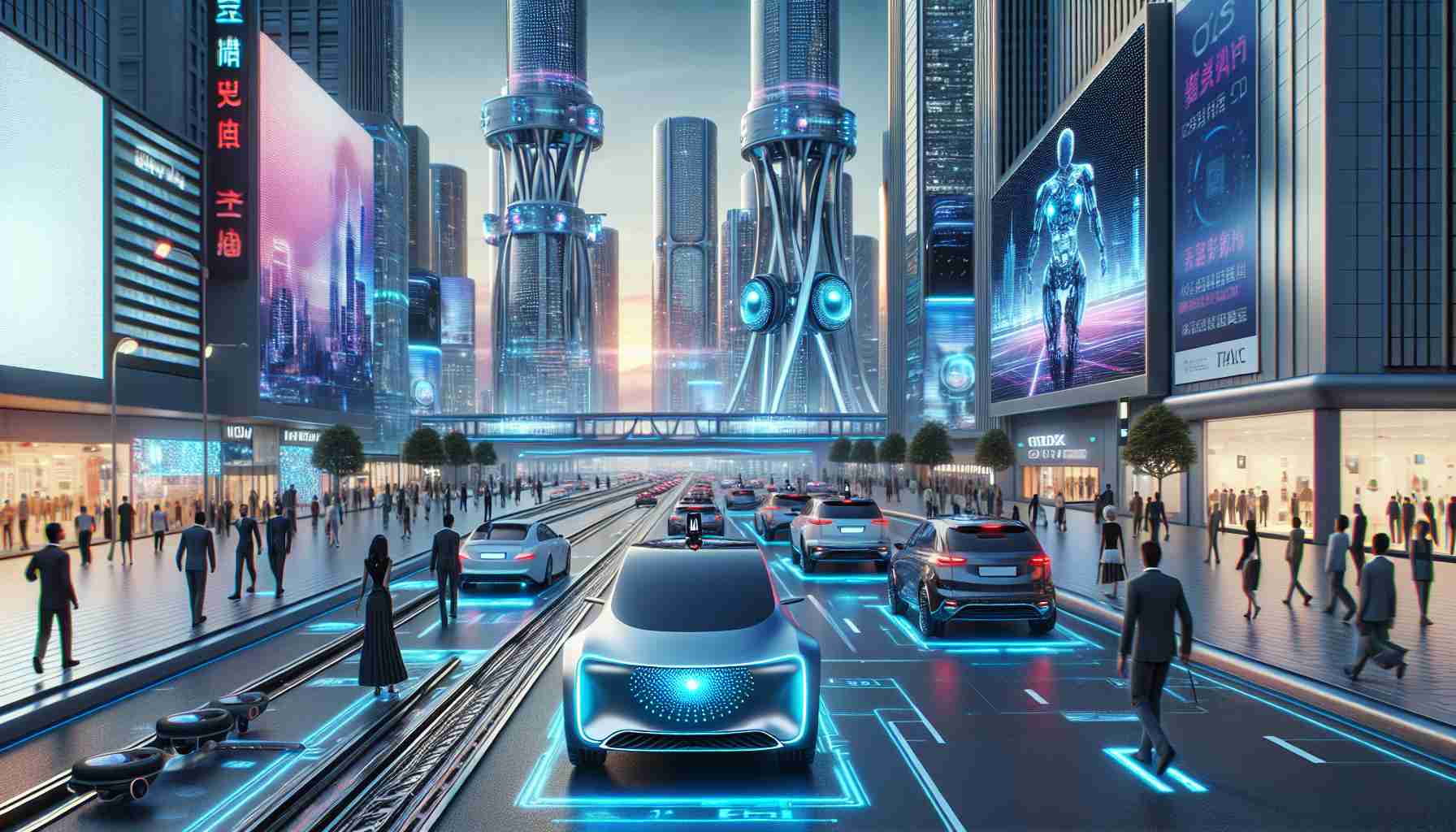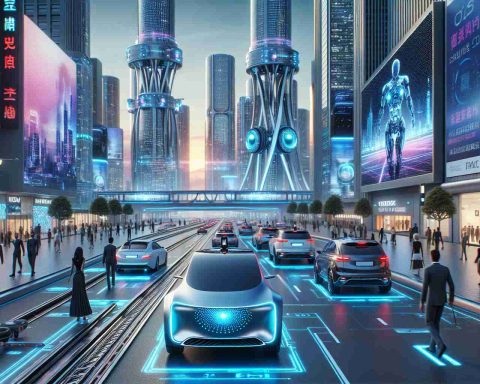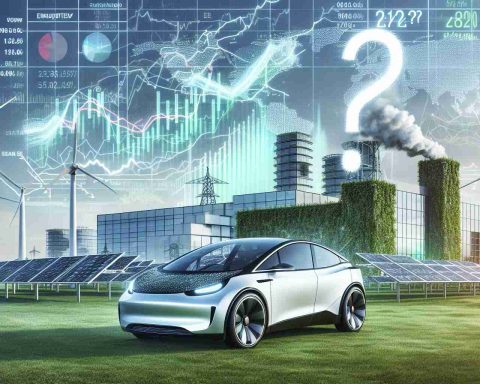Exploring the Rapid Growth of Autonomous Vehicles
In 2023, the Autonomous Driverless Cars Market achieved a remarkable valuation of USD 22.7 billion and is forecasted to grow at an astounding CAGR of 42.74% through 2030, potentially reaching almost USD 104 billion. This expansion is primarily fueled by innovations in artificial intelligence, machine learning, and advanced sensors like LiDAR and RADAR.
The surge in autonomous vehicle adoption is attributed to enhanced safety measures as these cars are expected to significantly decrease road accidents. Estimates suggest a potential reduction of up to 90% in accident rates, drastically lowering costs associated with them. Major automotive players such as Tesla, Toyota, and General Motors are heavily investing in cutting-edge autonomous technologies, establishing strategic partnerships to hasten innovation.
Such collaborations, coupled with an increasing consumer demand for improved operational efficiency, are propelling market growth forward. Autonomous vehicles are also being integrated into ride-sharing services, combining affordability with efficiency.
Regions like Vietnam and Thailand are making strides in this field, focusing on smart transportation solutions tailored for urban environments. Japan leads with innovative Level 4 cars targeting urban areas, while South Korea witnesses consolidation as tech firms acquire expertise in AI for autonomous driving.
As the market evolves, advancements in safety features and committed research towards consumer trust are vital for the proliferation of driverless cars worldwide.
Societal and Economic Implications of Autonomous Vehicles
The rapid development of autonomous vehicles is reshaping not just the automotive industry but also has profound implications for society and culture. As these vehicles become mainstream, we may witness transformative changes in urban planning. Cities could see a shift towards pedestrian-centric designs as the reliance on personal vehicles diminishes. Moreover, commuting patterns will likely evolve, leading to a decrease in traffic congestion and a potential increase in available public space.
In terms of the global economy, the rise of driverless technology is poised to disrupt traditional employment structures. Estimates indicate that millions of jobs in transportation—such as driving and logistics—could be at risk, raising questions about workforce adaptation and retraining. Conversely, new job opportunities in tech development, vehicle maintenance, and regulatory frameworks will emerge, necessitating a proactive approach to education and vocational training.
Furthermore, while autonomous vehicles promise safety improvements and reduced accident rates, their environmental impact should not be overlooked. As these vehicles often emphasize electric technology, a transition to cleaner energy sources could contribute significantly to reducing urban air pollution. However, the lifecycle impact of battery production and disposal must also be considered.
Overall, as autonomous technology advances, balancing its benefits against potential societal disruptions will be crucial. Stakeholders must engage in dialogue to ensure that technology serves the greater good while fostering an environment that embraces innovation responsibly.
Unveiling the Future: Autonomous Vehicles Set to Revolutionize Transportation
Exploring the Rapid Growth of Autonomous Vehicles
The Autonomous Driverless Cars Market is experiencing a phenomenal growth trajectory, with a market valuation reaching USD 22.7 billion in 2023. Projections indicate a remarkable compound annual growth rate (CAGR) of 42.74% from now until 2030, potentially skyrocketing the market value to nearly USD 104 billion. This exponential growth can be attributed to significant advancements in artificial intelligence, machine learning, and state-of-the-art sensor technologies such as LiDAR and RADAR.
Innovations Driving Growth
Innovations are at the heart of this industry growth. Advanced algorithms and AI technologies enhance sensory input processing, enabling vehicles to make real-time decisions. These advancements not only improve vehicle performance but also contribute to safety enhancements, which are paramount as autonomous cars are expected to reduce road accidents by an astounding 90%. The implications are far-reaching, as fewer accidents equate to lower societal costs associated with emergency services, insurance, and medical care.
Key Players in the Market
Leading companies like Tesla, Toyota, and General Motors are investing heavily in autonomous technologies. These firms are forging strategic partnerships with tech companies and startups, a move designed to accelerate technological advancement and operational efficiencies in the autonomous vehicle space.
Integration into Transportation Networks
The integration of autonomous vehicles into ride-sharing services is transforming urban mobility. Companies are positioning these self-driving solutions as both cost-effective and efficient alternatives to traditional transportation models. This shift not only caters to consumer demand for improved mobility solutions but also aligns with broader goals of environmental sustainability and urban planning.
Global Perspectives
Countries like Vietnam and Thailand are making noteworthy progress in smart transportation solutions tailored for urban settings. Japan is at the forefront with its development of Level 4 autonomous vehicles specifically designed for dense city environments. Meanwhile, South Korea is experiencing industry consolidation, where major tech firms are acquiring companies to bolster their artificial intelligence capabilities essential for autonomous driving.
Safety Features and Consumer Trust
As the autonomous vehicle market continues to evolve, advancements in safety features and the building of consumer trust remain critical. Research and development are focusing not only on technological innovations but also on addressing public perceptions and concerns about safety and reliability.
Limitations and Challenges Ahead
Despite the optimistic outlook, the industry faces several challenges, including regulatory hurdles, technological limitations, and infrastructure requirements. The high complexity of urban environments can hinder the full realization of autonomous systems, demanding ongoing innovation and strategic planning from stakeholders.
Market Insights and Predictions
As we look ahead, the autonomous vehicle market is poised for transformative changes grounded in safety, efficiency, and consumer satisfaction. Industry analysts predict that as these vehicles become more prevalent, they will redefine personal and public transportation dynamics across global markets.
For further information on the future of transportation and autonomous technology, visit AutoWeek.













